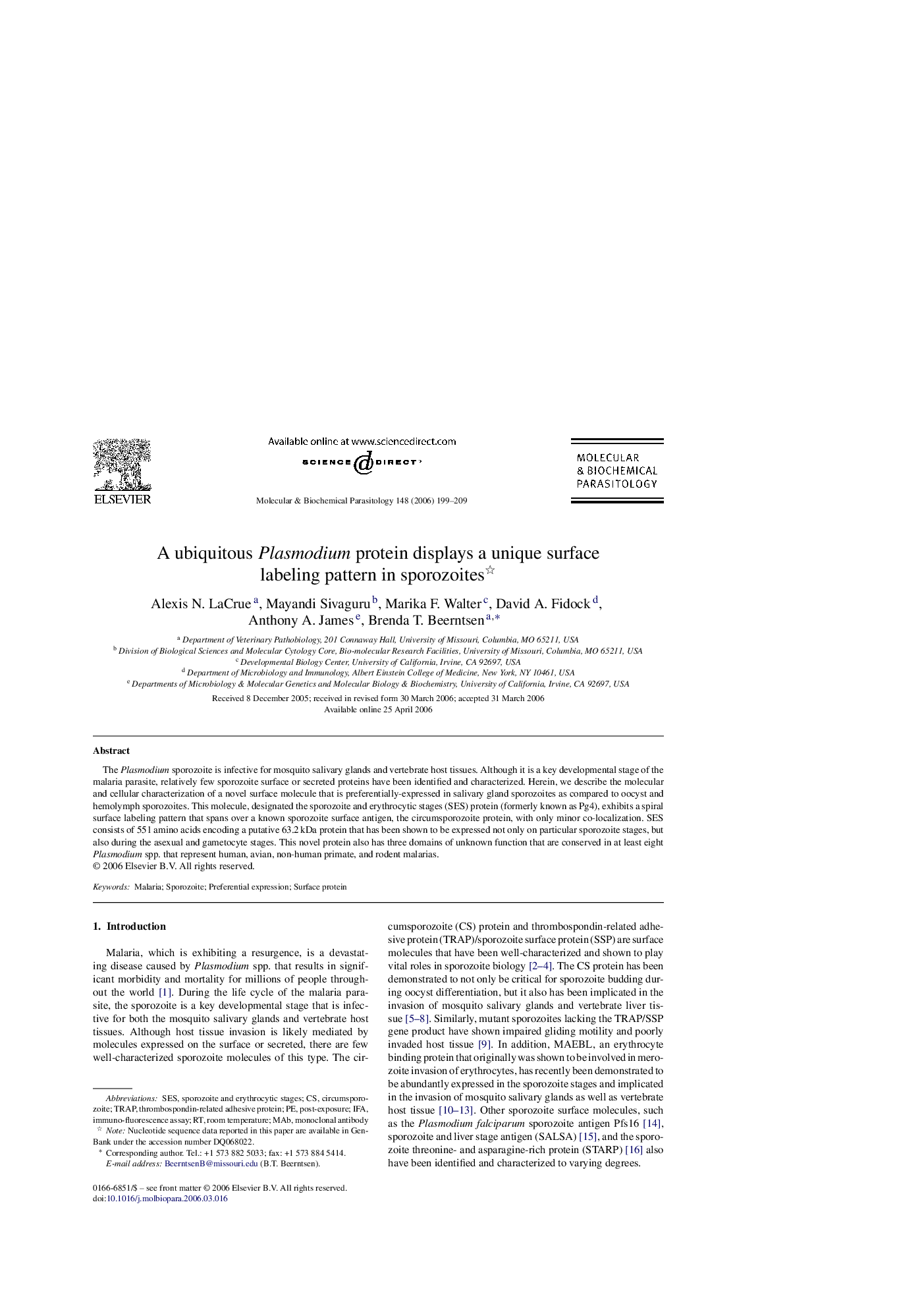| Article ID | Journal | Published Year | Pages | File Type |
|---|---|---|---|---|
| 2830418 | Molecular and Biochemical Parasitology | 2006 | 11 Pages |
The Plasmodium sporozoite is infective for mosquito salivary glands and vertebrate host tissues. Although it is a key developmental stage of the malaria parasite, relatively few sporozoite surface or secreted proteins have been identified and characterized. Herein, we describe the molecular and cellular characterization of a novel surface molecule that is preferentially-expressed in salivary gland sporozoites as compared to oocyst and hemolymph sporozoites. This molecule, designated the sporozoite and erythrocytic stages (SES) protein (formerly known as Pg4), exhibits a spiral surface labeling pattern that spans over a known sporozoite surface antigen, the circumsporozoite protein, with only minor co-localization. SES consists of 551 amino acids encoding a putative 63.2 kDa protein that has been shown to be expressed not only on particular sporozoite stages, but also during the asexual and gametocyte stages. This novel protein also has three domains of unknown function that are conserved in at least eight Plasmodium spp. that represent human, avian, non-human primate, and rodent malarias.
